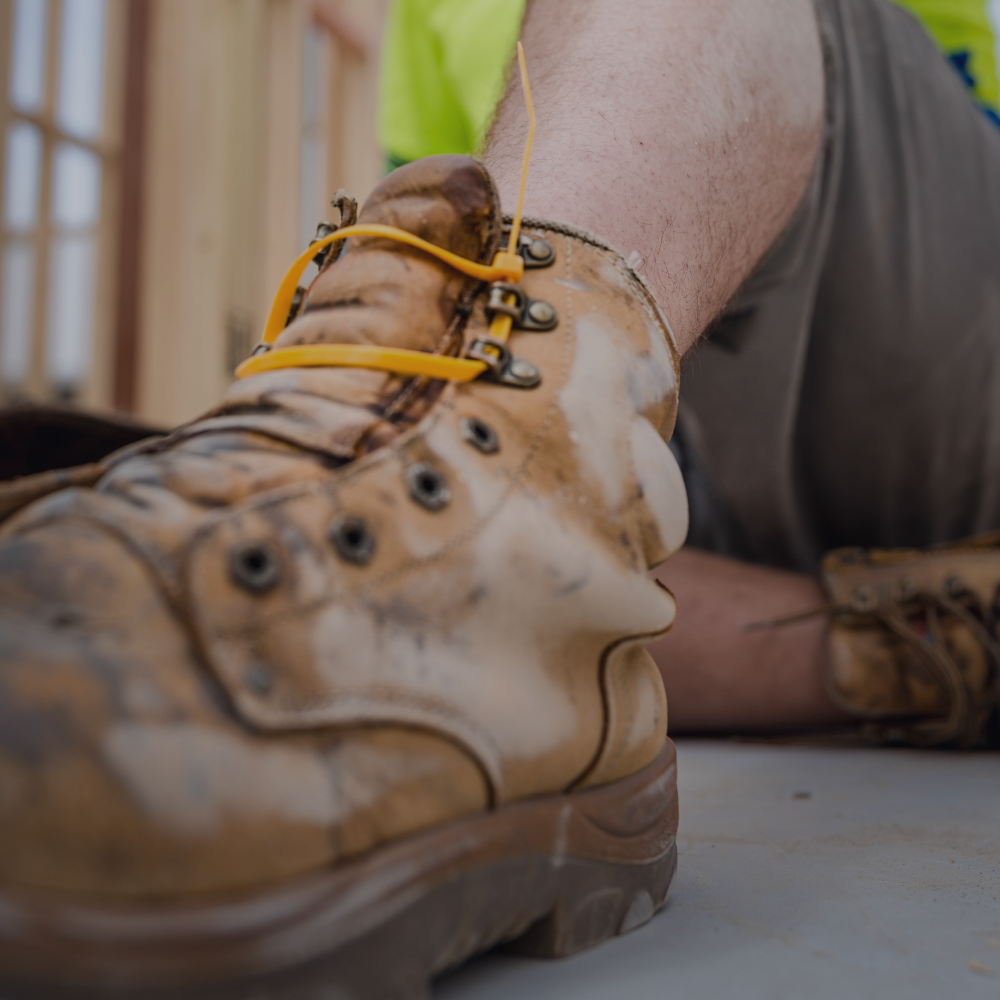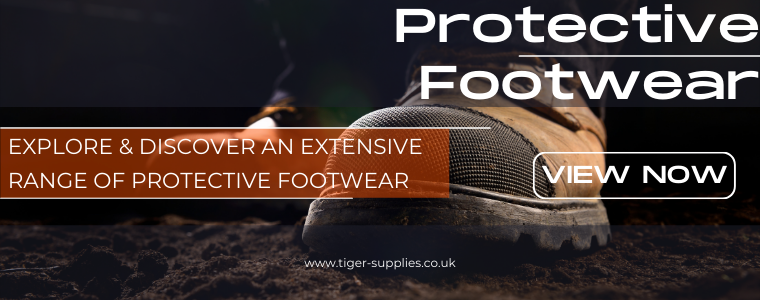Safety Footwear: Protecting your feet on site (EN ISO 20345)
The importance of protective footwear
Choosing the right safety footwear is important due to the variety of industry-based hazards that can cause injuries to your feet. These vary from crushed or broken bones, punctures to the sole, burns, and sprained or twisted ankles can occur if you aren’t equipped with the correct type of protective footwear.
In the UK over 100,000 accidents at work are reported every year, due to workers not having the correct type of protective footwear. Not only does this affect the staff's health and wellbeing but it can be also very costly for the business.
Under Personal Protective Equipment at Work Regulations (1999), it states that “if a hazard or risk cannot be controlled or removed, then protective gear must be provided”. Failing to comply and not inform or provide workers with correct protective footwear can lead to costly fines or even injury lawsuits.
Risk Assessment
Before selecting the appropriate safety footwear, a risk assessment of the workplace needs to be completed. The results of this assessment will indicate which hazards you need to protect your workers.
Hazards to look out for feet include:
- Wet conditions
- Electrostatic build-up
- Slipping, cuts, and punctures
- Falling objects
- Molten rock, metal, or glass
- Chemical splash
- Extreme temperatures
- Outdoor or indoor use
It is important to question your workers and consider their opinion after the initial risk assessment, as they can identify any additional day-to-day risk, they encounter that may have been missed or overlooked.
What Is EN ISO 20345:2011?
All shoes across the UK and EU that are classified as ‘protective footwear’ are measured against EN ISO 20345:2011. Understanding this will allow you to properly equip your staff with the correct protective footwear, keeping them safe and motivated.
EN ISO 20345:2011 specify the minimum levels of protection safety boots & shoes must adhere to, these include mechanical risks, slip resistance, thermal risks, and ergonomic behaviour. Some safety shoes or boots have additional features that offer more benefits, protection and resistance which can greatly benefit the user.

|
Category |
EN ISO 20345 Rating |
| SB SBP |
|
| S1 S1P |
|
| S2 | As per S1 with added water penetration and absorption resistance. |
| S3 | As per S2 with added cleated outsole and penetration resistance. |
| S4 | As per S1 but is moulded from a polymer or rubber that makes them completely waterproof and leak-proof. |
| S5 | As per S4 with added midsole penetration resistance. |
Slip Resistance Rating
| SRA |
Footwear that has been tested on a ceramic tile wetted with a dilute soap solution. |
| SRB | Slip resistance is tested on a Steel plate that has been saturated with Glycerol. |
| SRC | Tested under SRA and SRB conditions. |
Additional Classification
| P |
Penetration resistance. |
| CI |
Provides insulation against the cold for 30 minutes at -20°C |
| HI |
Provides heat resistance for 30 minutes minimum of 150°C |
| HRO | The outsole has been tested for heat resistance against 300°C on contact. |
| WRU | Water-resistance upper. |
| WR | Footwear can be worn in outdoor environments exposed to sustained wet weather and not leak. |
Complying EN ISO 20345:2011
As stated above it is important for employers to inform their workers type of protective footwear needed for the job. If the employers choose to provide protective footwear, they should ensure that it is well-fitted and comfortable.
After use, all protective footwear must be cleaned, dried, stored correctly, and examined thoroughly before and after work to ensure they are still appropriate to use.
An effective safety footwear maintenance system should include:
- Checking for damage, punctures, wear and tear.
- Cleaning regularly to avoid build-up of dirt.
- If there is damage, repair where possible. If damage is beyond repair, then replacement shoes will be needed.
Summary
Protective footwear can make all the difference if a dangerous situation should occur. EN ISO 20345 safety ratings, ensure employers remain compliant with current regulations and workers are protected in hazardous environments. Equipping the correct safety shoe will reduce the risk of injuries to the feet and have a positive effect on the workers as they feel more safe, comfortable, and motivated, therefore being more productive.


